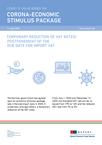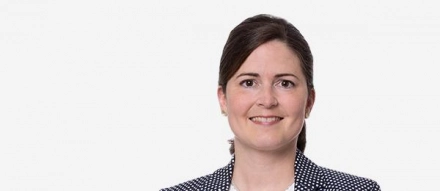
Corona-Economic Stimulus Package: Reduction of VAT Rates
The German government has agreed upon an economic stimulus package late in the evening of June 3, 2020. It comprises, amongst others, a temporary reduction of the VAT rates. From July 1, 2020 until December 31, 2020, the standard VAT rate will be reduced from 19% to 16% and the reduced VAT rate from 7% to 5%.
What does this mean for businesses?
In General
- Although there is currently no written publication available, it can in our view be assumed that the principles of the last increase of the standard VAT rate from 16% to 19% as of January 1, 2007 can be applied accordingly.
- The new VAT rates apply to supplies of goods and services as well as intra-Community acquisitions and imports which are carried out after June 30, 2020.
- Decisive is the point in time when the respective turnover is deemed to be performed.
It is, however, NOT crucial at which point in time
- the contract is cocluded
- the invoices are issued
- the invoice is paid.
- It can be assumed that there will be simplification rules (corresponding to the transitional rules for VAT rate increases), which will not require a formal confirmation of the responsible tax offices.
At What Point in Time is a Turnover generally deemed to be performed?
- Mere supplies of goods: when the transport commences at the place of dispatch.
- Supplies of services: when they are completed.
- Supplies with installation/turnkey projects: Upon acceptance by the customer.
Special Cases:
- In case of invoices for advance payments issued and payments collected before July 1, 2020, whereas the related turnover is performed after July 1, 2020, but before January 1, 2021, the supplier has to reimburse the overpaid VAT, i.e. the difference between the old and the new VAT rate, to the customer.
- In case of partial supplies, the applicable VAT rate depends on the point in time of these partial performances. The time of the completion of the overall work is irrelevant. Please keep in mind that only parts of a supply which are economically separable and for which a separate remuneration is concluded can be regarded as partial supplies.
- Supplies with installation/turnkey projects are deemed to be carried out upon acceptance by the customer. If this is between July 1 and December 31, 2020, the new reduced VAT rates apply. In case the acceptance takes place before July 1, 2020, the current VAT rates are applicable. The principles of partial supplies apply likewise.
- The new reduced VAT rates also apply to import VAT which is due for imports after June 30, 2020. Moreover, the economic stimulus package foresees that the due date for the import VAT is postponed to the 26th day of the second following month (currently: 16th day of the following month). This regulation intends to improve the liquidity for businesses. It is currently unclear whether this measure will be temporary also.
- For continuous supplies such as rentals or bookkeeping services, the point in time at which the supply is deemed to be carried out is decisive also. This point in time is when the agreed service period ends. For subsequent supplies of goods, the exact day of every single supply is crucial. Contracts which serve as a permanent invoice must be adjusted to the new VAT rates.
- If the taxable basis for a supply changes (e.g. due to cash discounts, rebates, subsequent additional charges), the VAT rate which applies to the underlying supply also applies to the amount exceeding or underrunning the initial remuneration. Example: A supply carried out in May 2020 is declared with a taxable basis of € 100 plus 19% VAT in the May-VAT return. In July 2020, the net remuneration decreases to € 80 due to a complaint by the customer. This is to be considered in the VAT return for July 2020 with a negative VAT amount of € 3.80 in box 81 of the form. Annual bonuses must be split up in accordance with the underlying supplies.
- For taxation based on accruals, again, the point in time the supply is deemed to be carried out is crucial for the VAT rate. Example: A supply carried out in May 2020 is paid in July 2020. The tax payer reports this turnover in the VAT return for July 2020 – with the „old“ VAT rate of 19%. Vice versa: The tax payer has issued and collected an invoice with € 100 plus 19% VAT in May 2020, reported this turnover in the May-VAT return and rendered the supply in July. The VAT rate of 16% has to be applied retroactively and the VAT difference must be declared in the July-VAT return.
Practical Information
- The IT system must be adjusted as soon as possible. Please note that the current VAT codes of 19%/7% are not obsolete as they are still required, for example, for reductions of the taxable basis or if a claim becomes irrecoverable.
- If invoices with the „old“ VAT rates are issued in error, the issuer of the invoice owes this VAT to the tax office simply because it is shown on the invoice. The customer, however, cannot reclaim the input VAT from the tax office.
- The temporary reduction of the VAT rates is intended to stimulate the economy. This implies that the government assumes that prices for final customers will decrease. In any case, it might be recommendable for businesses to check and, as the case may be, reassess their pricing models (gross- or net agreements).
- As far as contracts include a VAT clause based on the “old” VAT rates, these contracts must be amended accordingly (e.g. through an annex). As the case may be, claims for compensation according to sec. 29 German VAT Code must be kept in mind. Otherwise, the (as from July 1, 2020 excessive) VAT amount must be paid to the tax authorities. The customer is not entitled to deduct the excessive input VAT.
- Since the point in time when the supply is deemed to be carried out is decisive, it might be worthwhile for companies to postpone investments to the second half year of 2020. This holds especially for businesses with limited right to deduct input VAT.
- When checking purchase invoices, it is crucial to take care that for supplies between July 1 and December 31, 2020, they show the reduced VAT rates of 16% respectively 5%. Otherwise, input VAT deduction of the excessive VAT amount is not possible.
The „Corona-Tax-Relief-Bill” foresees, amongst others, that between July 1, 2020 and June 30, 2021, the reduced VAT rate of 7% applies for services performed by restaurants or similar businesses. It can in our view be assumed that the general reduction of VAT rates as discussed above leads to a reduction of the VAT rate for services performed by restaurants or similar businesses to 5% also.




